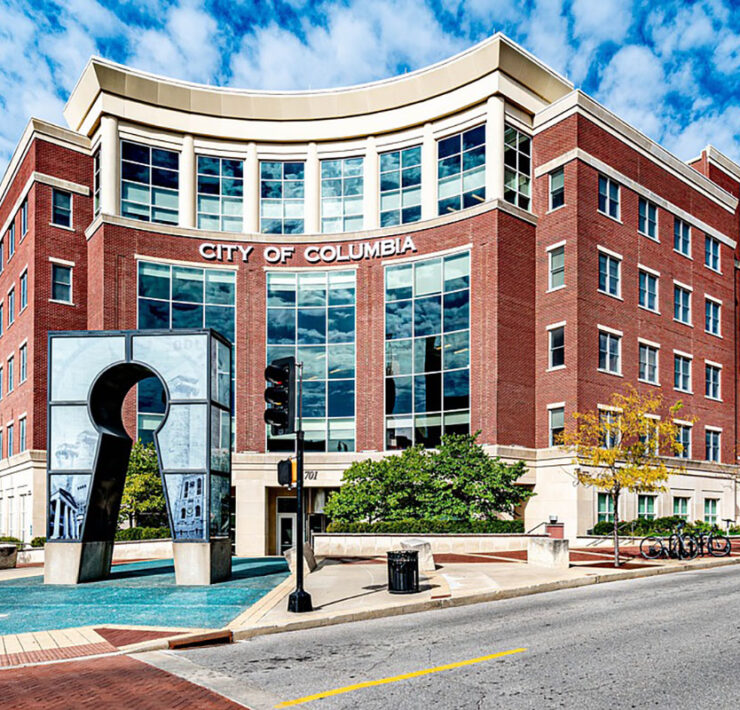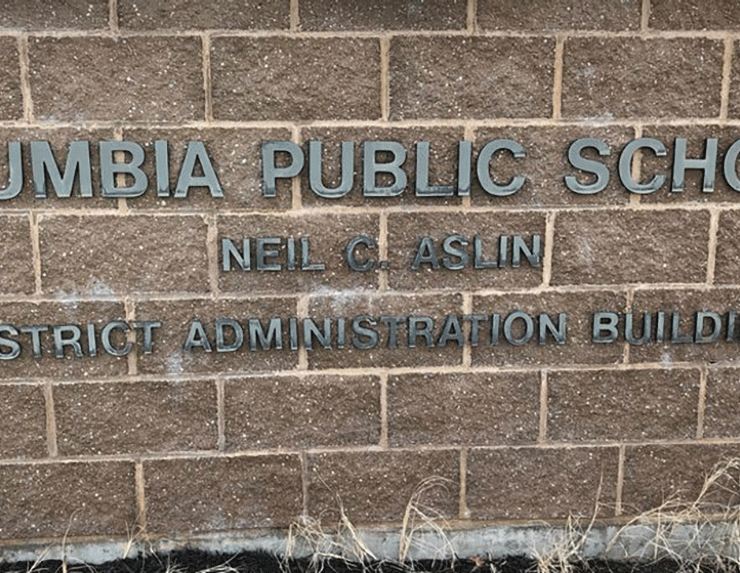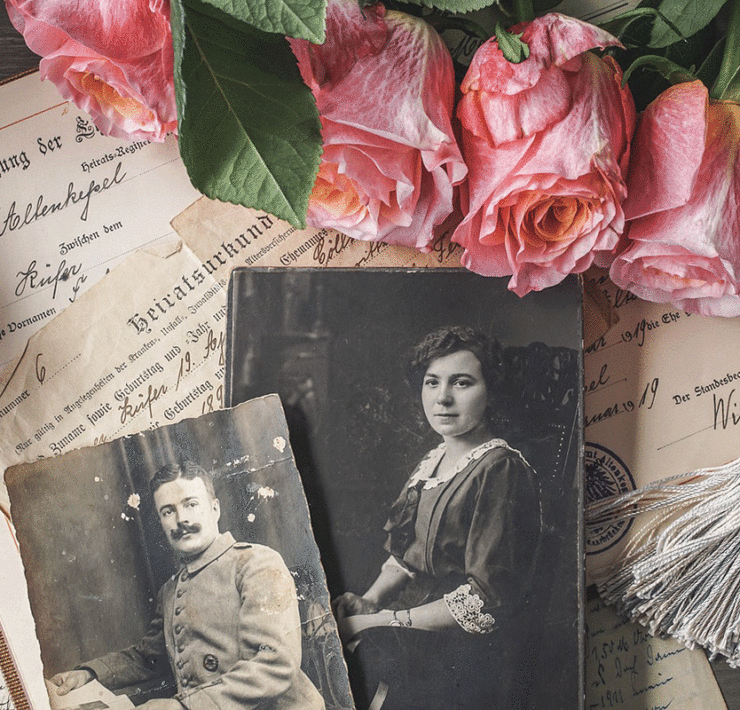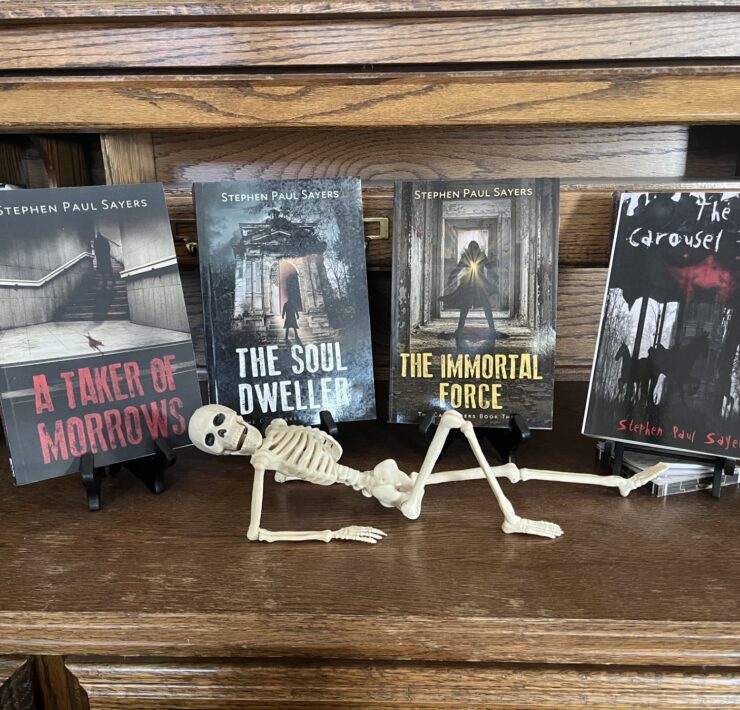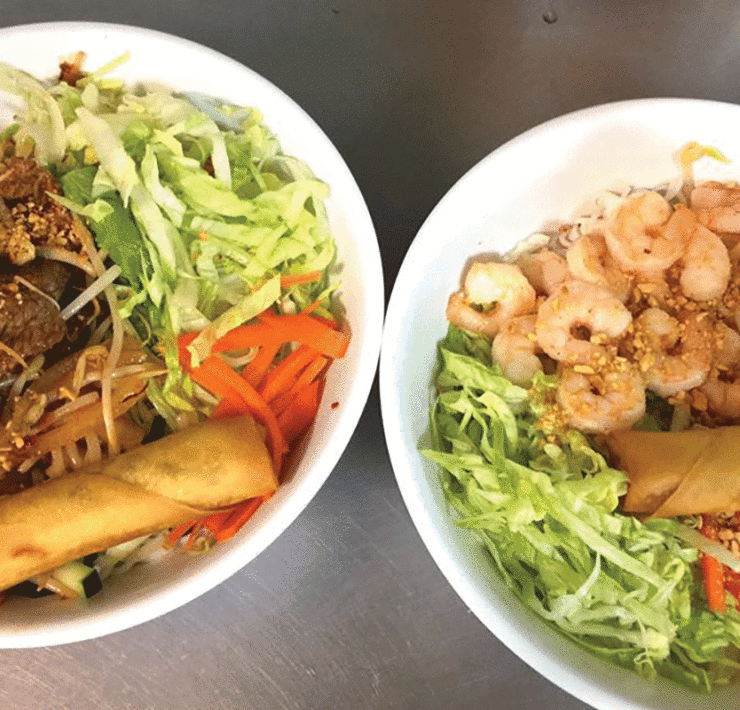Where the Wild Things Grow
- This story originally appeared in the August 2023 issue of COMO Magazine.
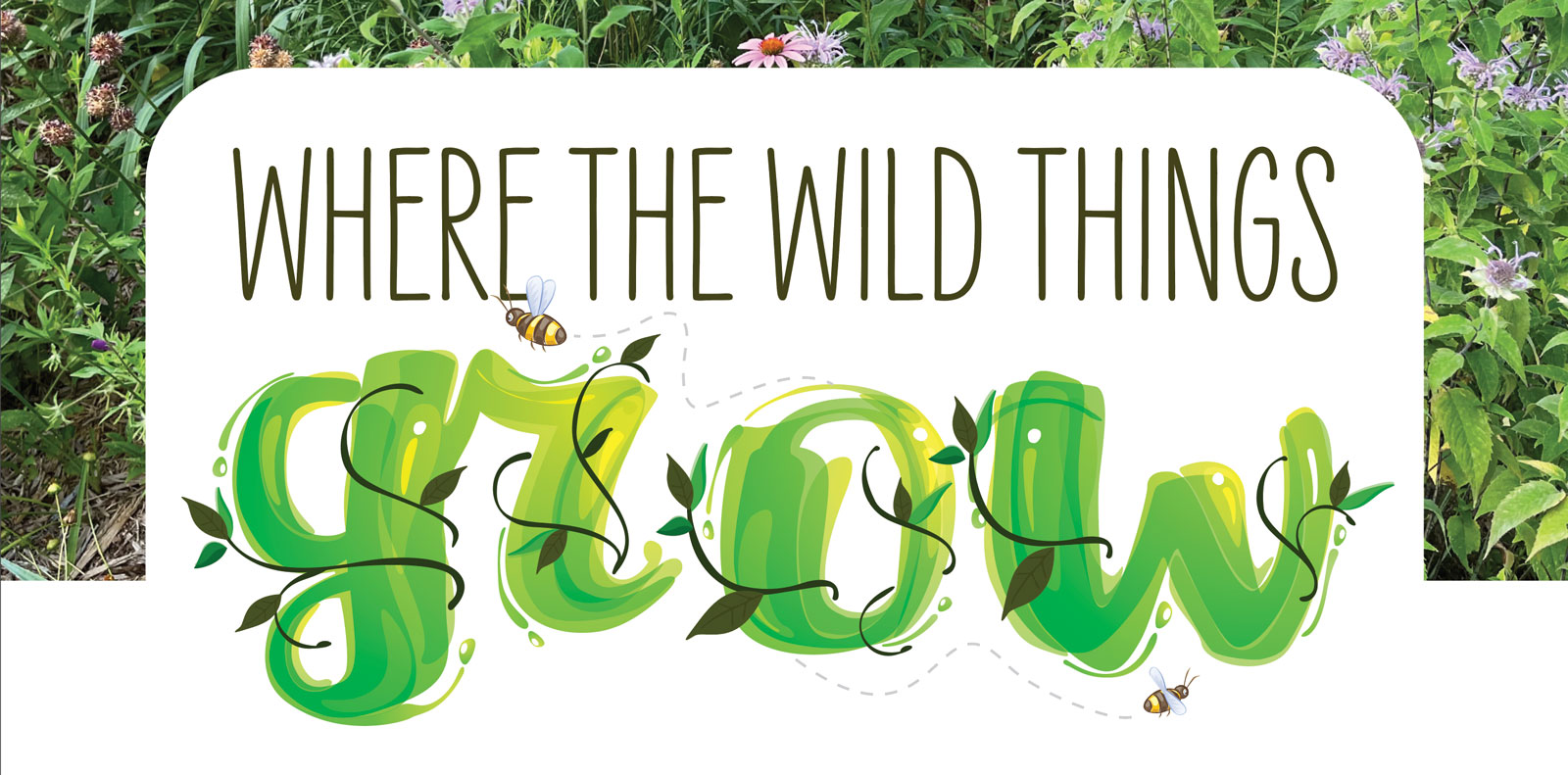
Columbia’s manicured lawns look orderly and pristine. But if you want to create a buzz in your yard, you’ll need to take a walk on the wild side.
Seventy-five percent of the world’s flowering plants rely on pollination to reproduce, and some 35 percent of plants we harvest for food — like vegetables, fruits, and nuts — rely on pollinators. Without all those bees buzzing around the apple trees when they’re in bloom, there won’t be any crisp apples to eat in the fall.
If you think propagating habitat for bees, butterflies, hummingbirds, ants, moths, wasps, flies, and beetles is a “rural” thing, think again. As residential and commercial development clears woods and fields and replaces them with asphalt and concrete, more and more pollinators are squeezed out.
Somewhere between foregoing development and saving pollinators lies a compromise: There are opportunities to create wild spaces within.
Keeping it Natural
Danielle Fox joined the city of Columbia in October 2016 in a partnership with the Missouri Department of Conservation. Not every city has a community conservationist, but Columbia’s wealth of parks, trails, forests, and streams offers prime opportunities for conservation initiatives. You might have noticed places where natural habitats have replaced lawns, including 15 acres in parks and 29 acres along Columbia roadsides.
Most people associate the need to create habitat with the plight of the monarch butterfly and European honeybees. But returning land to its natural habitat not only benefits pollinators, insects, and birds, but water as well. Native plants don’t require watering as non-natives do. Plus, they’re natural cleansers.
“It’s not just about conserving water from the tap, but it’s also about filtering stormwater,” Fox says. “All the rain that comes off our roof and runs into our yard eventually ends up in a creek. So, if our yard can be the first filter for that stormwater and remove some of the pollutants before it hits our local streams, that’s all the better.”
As Columbia continues to grow, the city can’t expand natural habitat on its own. Residents need to be involved in their own spaces as well. And they are.
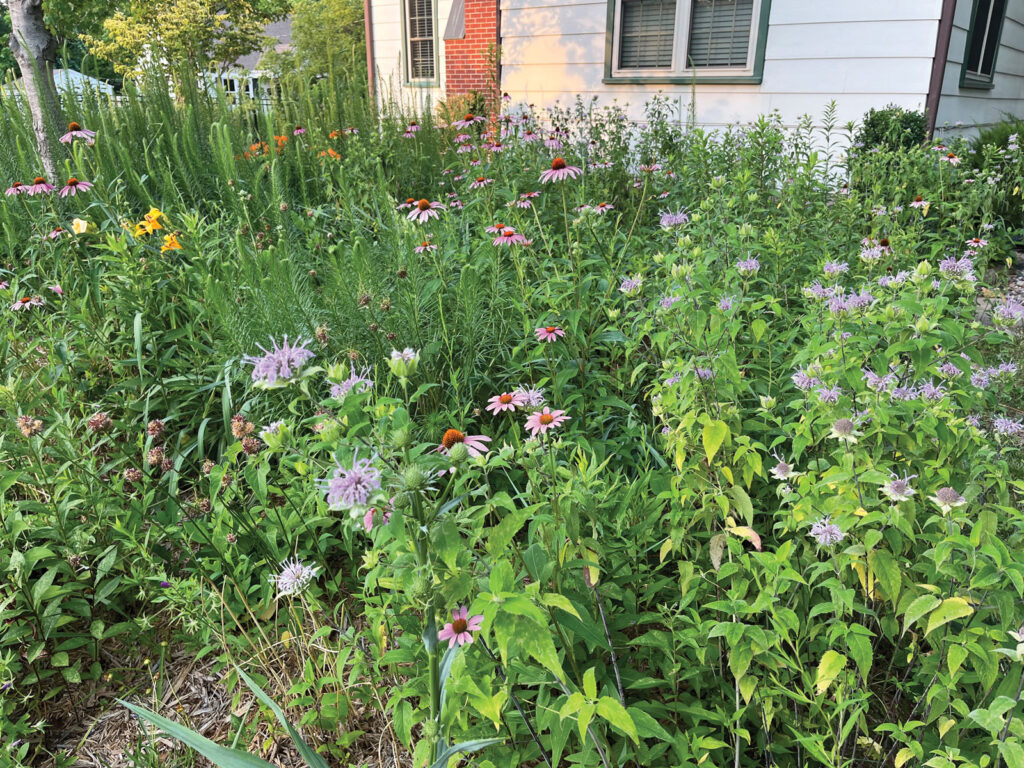
Columbia Untamed
Fox launched the CoMo Wild Yards program in 2017 to promote practices that improve the city’s biodiversity. Residents can learn how to convert some of their yards to natural habitats. If they already have it, they can have their wild yard certified.
“My original goal was to create a network of community members and engage them in conservation so we can build awareness about how our yards interact and affect the larger environment around us,” Fox says. In 2019 the city council adopted its Climate Action and Adaptation Plan. Part of that plan on the adaptation side is building and improving biodiversity.
Fox adds, “The more biodiverse your environment is, the more resilient it is to changes in our climate.”
Homeowners and business owners can schedule a site survey and consultation through Fox’s office and receive a plan for converting areas of their yards into natural habitats. It’s not a landscape design. The plan recommends native plants that will grow well in each person’s space.
Only 10 wild yards have been certified as silver, gold, or platinum to date. The difference in levels is the variety of plants, shrubs, and trees used. Fox says the more complex it is, the more diverse it is — and that’s what she wants people to work toward.
About 150 plans have been developed so far and roughly 100 are active. That’s a lot of work for a single conservationist, which is why Fox has partnered with staff from the U.S. Fish and Wildlife Service Missouri Private Lands Office to survey yards and develop plans.
“Historically, we’ve focused quite a bit of our work out in the rural landscapes,” says Erin Holmes, state coordinator for the Partners for Fish and Wildlife program. “But in recent years, we’ve started to focus on how we can create and maintain habitat within cityscapes and work within communities to help them identify resource concerns they may have about their immediate surroundings and how we can address that with nature-based solutions.”
This partnership benefits the Wild Yards program beyond staffing. The city and U.S. Fish and Wildlife are providing funding that will be used to help residents create native landscapes in yards. Fox says having the funding to buy plants makes the program more inclusive by putting it within reach for more homeowners.
“Most people get caught up on the fact that they have just a small area to work with,” Holmes says. “But one of the cool things about planting native gardens is that there’s an immediate response to that. Homeowners, even in a small yard, can have a positive impact on species.”
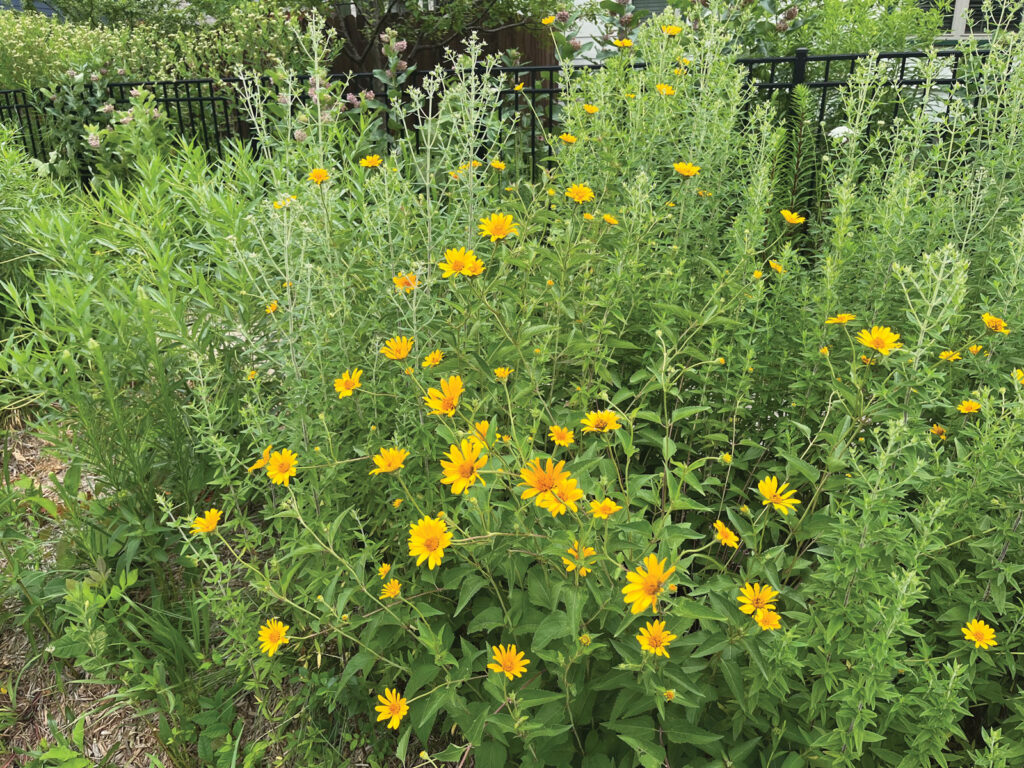
Beauty and the Bees, Bugs, and Butterflies
Rick Robertson is known around town as the owner of Booches, a Columbia institution. But he’s also known for his incredible pollinator yard.
Reading about declining populations of monarchs and bees two decades ago prompted Robertson to start thinking about what he could do to change that trajectory. After losing a lot of plants in the drought of 2012, he began slowly converting his yard to a native one. Today, about three-quarters of his yard is devoted to native plants.
“There are so many things that excite me about my yard,” Robertson says. “Each day, you can hear the sound of the bees doing their thing. And the amount of butterflies I get to see each day does my heart good. Plus, the waves of colors I get to see from early spring until late fall are quite breathtaking.”
Lottie Bushmann’s husband wanted to replace some of their yard with buffalo grass 15 years ago so he wouldn’t have to mow it all. But such plantings tended to violate city ordinances back then —something that’s changed in recent years.
Bushmann saw her first cedar waxwing in the fall of 2003. She became hooked on birds and planting things that would attract them and butterflies. Her house is located at the bottom of Katy Lane on the MKT Trail where the adjacent cul de sac drains a lot of water into their yard.
“When we first moved there, the backyard was honeysuckle and blackberries bordering a fescue lawn,” Buschmann says. “My husband had the brilliant idea to landscape with natives along the path of the water to the wetlands. It did help channel the water which kept it from being a mucky mess. He also removed all the honeysuckle.”
Bushmann chooses native plants that can tolerate both wet feet and drought, as many native species do. Now, her yard is filled with birds, monarchs, zebra swallowtails, and other pollinators.
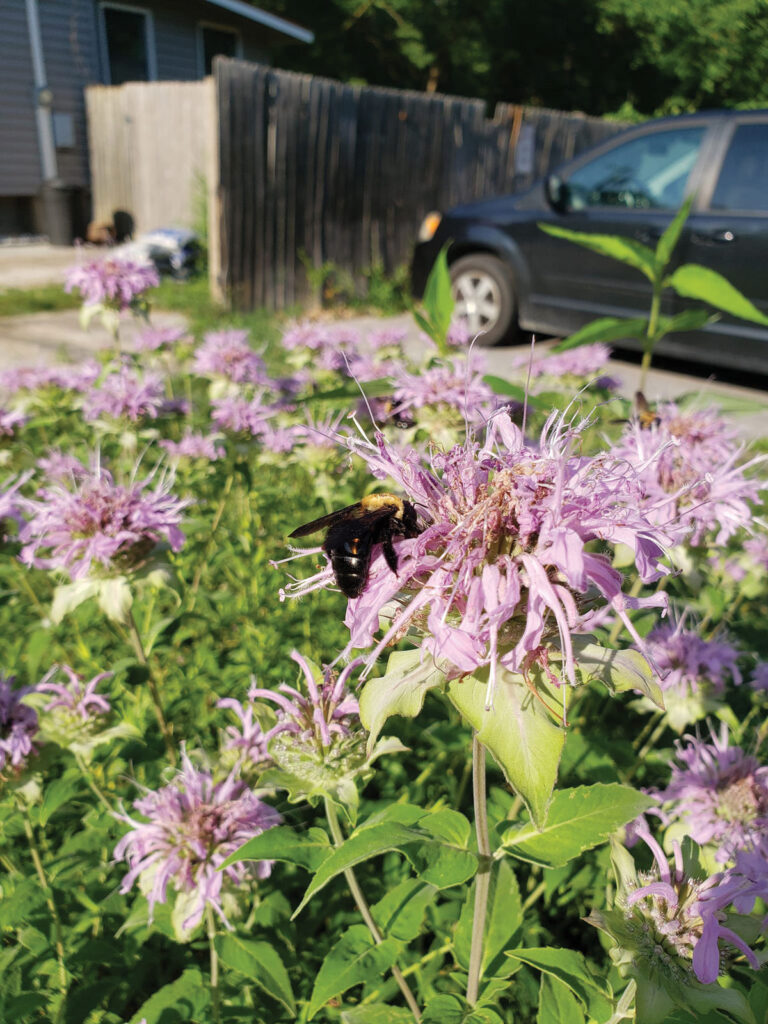
The Birds as well as the Bees
The relationship between birds and pollinators, and those who love them, is a close one. Allison Vaughn handles communications for the Columbia Audubon Society. When the owner of the daycare across the street from her home asked if she could plant some milkweed for them to attract monarch butterflies, Vaughn jumped right in. Now, the two small native wildflower beds at the daycare attract pollinators. Vaughn also digs and separates the native plants to distribute to neighborhood homeowners.
“The kids and parents of all ages love the flowers and seeing the butterflies and big bumblebees,” Vaughn says. “It’s really important to introduce children to native plants and the importance of them on the landscape.”
Then, there’s the Columbia Audubon Society’s Nature Sanctuary. It’s roughly 28 acres, nestled between Bray Avenue in a residential neighborhood and the city’s Bonnie View Nature Sanctuary. A decade after Bill Mees and other members received a grant from the Missouri Bird Conservation Initiative to restore the acreage to native grasslands, nearly 170 different species of birds have been spotted, along with butterflies, bees, and other pollinators.
“The sanctuary’s presence on the edge of a subdivision helps educate people who otherwise probably wouldn’t go to an area like this,” Mees says. “But since it’s right out their back door, and since Scott’s Branch Trail runs along the southern edge of our property, there’s a lot of foot traffic, dog walkers, and bicyclers who all get to see it.”
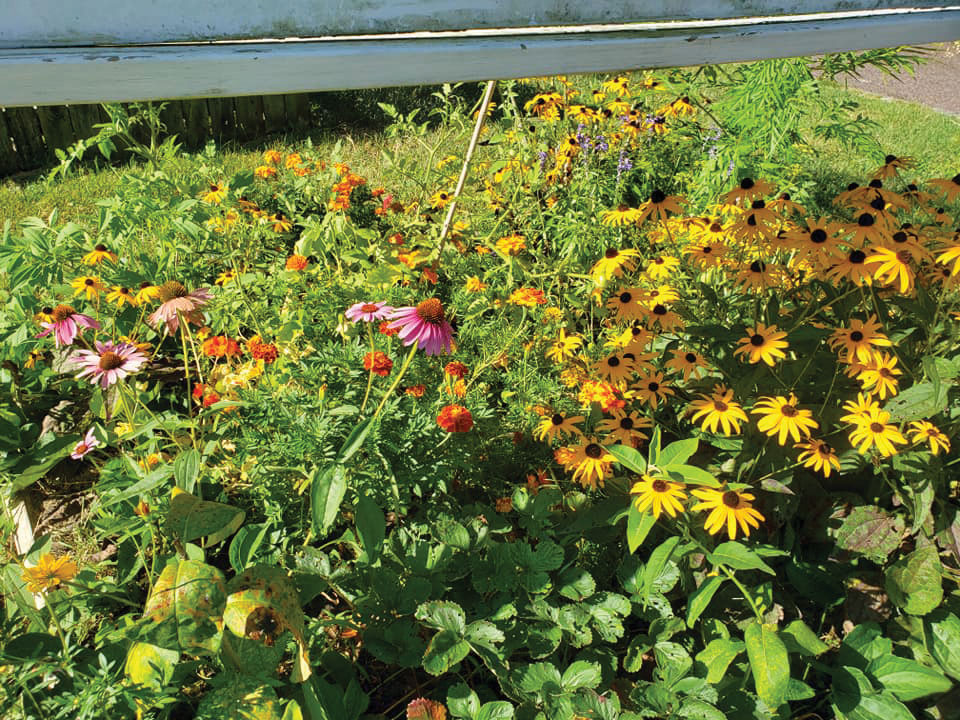
Back to Nature
While some people view native gardens as uncharacteristic of an urban landscape. But Fox is hopeful that efforts to restore pockets of natural habitat in Columbia will continue to grow.
“The program has made people more confident about speaking out when others who are vocal aren’t as favorable toward native landscapes,” Fox says. “People are finding their voice.”



